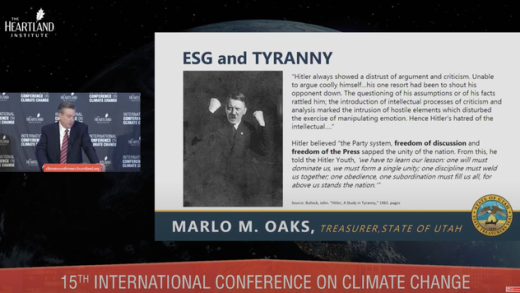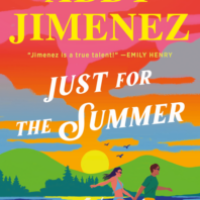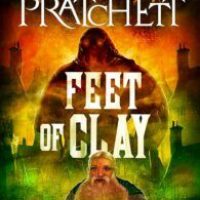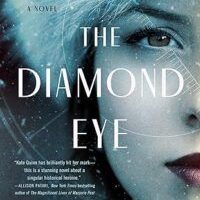Kali Fajardo-Anstine’s short story collection Sabrina & Corina summons a world we hardly recognize, but should. Do you know the origin story of the Navajo? Would you recognize Doña Sebastiana in her cadaverous form, armed with a bow and arrow, custodian of the path to the afterlife? What can be said of the Latinx peoples of isolated Southern Colorado of antiquity, or the Denver of modernity? Fajardo-Anstine reveals all this through acts of social and cultural justice in literary form. She does not tread lightly upon truth, instead she brushes away layers of dirt and deception.
She can make a story smell of sickness. She can make legend of malediction. Conjuring the Sangre de Cristo Mountains, and unfurling the Denver skyline, there is no limit to what Fajardo-Anstine can manifest on paper and, subsequently, in our dreams. Yet, what is most admirable is the courage of her hand. She’s unafraid to delve into areas of race, feminism, queerness, and class. She interrogates whiteness, and its associations like passing and colorism, prodding unapologetically.
Fajardo-Anstine and I spoke about craft, music, and writing through inherited trauma, and she drops gems for us to pick up all along the way.
Maria V. Luna: In your collection, what do characters like the Cordova family represent when it comes to contributing to the portraiture of Latinx communities?
Kali Fajardo-Anstine: I was trying to portray a community that, often times, is invisible in the greater Latinx narrative. Southern Colorado, Northern New Mexico, mixed Latinx communities here in Denver—I was trying to create characters that were very individualistic, very human, in a way that I haven’t seen rendered before.
MVL: The term primas hermanas, or cousin sisters, refers to female cousins who are brought up so close they transcend Western nuclear kinship structures and are considered sisters. Sabrina and Corina, characters from the titular narrative, are primas hermanas, and as so often cousin sisters do, they become character foils. Can you talk a bit about Corina’s seeming stoicism in the face of her responsibilities to Sabrina? Corina applies makeup on Sabrina’s lacerated corpse, and she carries out this act with an alarming lack of emotional response.
KFA: I love that you call Corina stoic because that’s definitely a word reserved for men, in particular white men.
Those are comments I got early on in workshops—that my women characters were unfeeling, cold, and emotionless. That’s just part of my aesthetic. That’s the way I write, and that’s the tone I write in. I recently saw a lecture with the writer Jay Parini, and he said that tone is an author’s attitude toward his or her subject matter. I think that unfeelingness, or coldness is related to my worldview. I came out of a lot of violence in my childhood, and maybe that’s one of the ways I coped with it, which was to develop this hardened shell. How do I compartmentalize the violence that I am experiencing and still live my life in an organized and rational manner?
MVL: That is absolutely evident in the Sabrina & Corina narrative. How is this coping mechanism deployed in other stories within the collection?
KFA: Excellent question. The first character that comes to mind is eighth grader Sierra from Sugar Babies who has been tasked with raising a bag of sugar, as if it were a real baby, with her class partner, Robbie. Sometimes, when I give readings and revisit that story, I am shocked at how funny and wise Sierra can be, but I am also surprised at how very closed off she is to those around her. She can be downright mean to Robbie, but I never got the sense while writing her that Sierra didn’t care for him. Sierra often feels connection to those around her while actively brushing aside any form of affection. At one point in the story, Sierra’s mother asks her if she can feel the landscape wrapped around her so tight it’s like being in a rattlesnake’s mouth. Sierra lies to her mother. She tells her that she feels nothing at all. Whenever I read that passage, I am surprised by Sierra in that moment, but also sad for her. It’s almost as if by showing love, we make ourselves more vulnerable to pain.
MVL: To go back to your workshop experience, how did you respond to comments about “unfeeling” characters? Do you think there was a gendered slant to those comments?
I wonder if readers expect a greater level of sentimentality from women writers and this influences the way fiction is read.
KFA: Once during a workshop, a classmate, after reading the first draft of my story Remedies, told me that she would never treat her children in such an awful way—that no woman would. But I disagree. People do hurtful, vicious things to each other every day. I think my characters are often misread as unemotional, numb, and even cruel. I’ve wondered if readers expect a greater level of sentimentality from women writers and this somehow influences the way fiction is read. The ways to hurt another human being are innumerable, and for reasons I can’t quite know, mapping those crimes feels valuable.
MVL: “Sisters” is a devastating narrative. There is so much going on in this piece, and you handle topics of abuse, racism, classism, and lesbianism with subtly and then a sucker punch. All this is happening in the 1950s. What was the impetus for this story?
KFA: This piece is based on a family story, inherited trauma that was passed down from generations. I remember being in my apartment in Wyoming and I could hear the character Doty speaking to me, and I knew I had to write this story. It’s one of the most difficult things I’ve ever written, and it made me sick to my stomach to have to write it, but I knew this haunting was never going away.
You were asking about racism, classism, and lesbianism. Queerness was something that was common in my family. I had an aunt who was in Dykes on Bikes, and an uncle who, in the 1940s, was trans. My godfather, who is also my cousin, died of AIDS in the early 90s. This is part of my reality and I wanted to show that people have inhabited these spaces for a very long time. It was important to me that queerness wasn’t solely portrayed as contemporary.
MVL: Landscapes are rendered masterfully in this collection. What is intriguing about these narratives is that soundscapes are important as well. Can you talk about how the music of Neil Young, Patsy Cline, Steely Dan, and Bob Dylan works within these stories?
KFA: When I write, I usually create a playlist, and I repeat a song over and over again while I work on one story. It helps create continuity between the characters’ consciousness and my authorial consciousness. You can’t write a short story in a day, and when I play a song back, I am able to re-enter that space fluidly—something that became very important during the editorial process. Some of these stories I first wrote nearly a decade ago, and I needed to find a shortcut back into the world of the story. Music created that.
There is another layer of why music is so important in my work. To me, ordering a short story collection is a lot like choosing song order on an album. When it came time to put my stories in order for Sabrina & Corina, I asked friends what are some of the greatest ordered albums they could think of. People were throwing out album examples from Stevie Wonder to Kendrick Lamar to Bob Dylan. That made a lot of sense, because I devoured Dylan albums as a teenager. I discovered his music through my father when I was 15 years old. I think a lot of Dylan’s lyrical styling found its way into my prose style.
Patsy Cline’s music, too, was important to me throughout the writing of Sabrina & Corina. As a little girl, I spent time with my great grandmother and the rest of the women in my family who would play Patsy Cline’s songs as we cooked and cleaned house together. These were not white women, but they adore Patsy Cline because I think they were able to identify with the sadness and the violence she had experienced in her life—all the hardship she had gone through. You can hear that in her songs.
MVL: Can you talk about the allure of spaces the characters inhabit like Benny’s Dancehall, the town of Saguarita, and Cheesman Park?
KFA: I am a big fan of Edward P. Jones’s work, especially Lost in the City. That collection of short stories inspired me to authentically showcase the place in which I live, and where my people have lived for generations. My characters and my people have been in the Colorado/New Mexico region for as far back as history can trace. I wanted to show this with as much humanity and detail as I could. Jones’ work taught me to be as specific as possible about my characters and their place.
As for Benny’s, when I was a child, my great grandmother Esther and her sister Lucy would talk about these grand dance in Denver. They would go to these dances to see their friends and socialize with their community, a community of color. My great grandfather Alfonso was from the Philippines and it was at these dances where he met my great grandmother. Dance halls like Benny’s were spaces reserved for people of color in the West. But when I started researching these types of dance halls, I wasn’t able to uncover much in archives, which I believe has to do with who is doing the collecting and who is telling what stories. In my work, I wanted to bring Benny’s back to life.
Cheesman Park was a cemetery and in the later part of the 1890s real estate developers decided to build on it. They didn’t remove all the bodies. Now, whenever there is new development in the area, bones are found in the ground to this day. As a teenager, my friends and I used to hold seances in Cheesman, surely inspired by the Craft or another 90s movie. Living with that kind of knowledge, that kind of folklore, and not having it presented in any official history breeds a disconnect between the place where you’re from and the place you feel instinctually beneath your feet.
With Saguarita—I became fascinated with fictional towns in literature. You know, Faulkner has his fictional Yoknapatawpha County. My family emigrated up to Denver from Southern Colorado, and in my novel I call this place the Lost Territory, and that is where Saguarita is. I have the landscape of the Lost Territory in my mind, but because my family left that place, I thought it would be more respectful to render it as a fictional space. Denver is a specific place in my imagination while Saguarita is a more magical realm.
MVL: On examination of Colorado demographics, I noticed there are two ways the White population is considered: White and White non-Hispanic. This binary manifests physically in a few characters throughout the collection as being Hispanic and White. Can you unpick the duality of this embodiment?
If you can take a people, erase their history and who they are, they don’t have access to their power anymore.
KFA: I have a white father. I grew up with a lot of people who looked like me, or have last names like I have, and they would say that they are Spanish. They didn’t know about their indigenous or their Mexican background. I think this was a way to protect earlier generations from deep-seated racism in Denver. There was a forced cultural assimilation that happened here. It’s a form of cultural killing. If you can take a people, erase their history and who they are, they don’t have access to their power anymore.
Sabrina, from the story “Sabrina & Corina,” has an absent white father, and there are a lot of Chicanos in the Southwest who are white passing. So you may have a Spanish name, and you may come from this culture, but you don’t resemble the stereotype or dominant idea of what a Latinx person looks like. Sabrina is double alienated. The family thinks she’s gorgeous, and they put all their hopes and dreams into her, but that doesn’t elevate her, and it distances her further from her family. There is a scene where Sabrina asks Corina if she even looks like one of their family members. Colorism is a real thing in my family—some of us are light, and some of us are dark, and some have black hair and some have red hair. When you are mixed, these kinds of unpredictable physical traits appear and I really wanted to talk about that.
MVL: Staying on the topic of whiteness for a moment, there is an emphasis on white transgression throughout the collection. White fathers abandon their Hispanic children. White husbands and boyfriends provide opportunities for social ascension, yet they exoticize Hispanic women in exchange. Were you at all worried about alienating White readers?
KFA: That’s an interesting question because I never envision having readers—ever. I was just creating art, and it came out of a place of urgency and a deep truth. I don’t worry about centering White readers because the books I love don’t necessarily center White readers. I mentioned Lost in the City, I think you could give those stories to some White readers and maybe they will feel alienated. But alienated is how I felt when I was reading supposedly canonical literature throughout my education that only featured White characters. I felt alienated by the books that didn’t show me, and I hope my work helps start a conversation about who gets to be centered as a reader. My upcoming novel is historical fiction, and it examines the emphasis on the unattainable ideal of becoming White. Whiteness becomes so valued that it creates violence in these communities. It’s something I think about and I think about it often.
MVL: Your upcoming novel is about Depression-era Denver. Tell me about that.
KFA: I started working on this novel before I wrote the short stories. The novel explores the migration of the Lopez family, from Southern Colorado (the Lost Territory), to Denver in the 1930s. This is the genesis generation of all my characters, even those in Sabrina & Corina. They are a mixed people, Spanish and Pueblo Native Americans, working in a Wild West show before fleeing north to Denver after racial violence incites. During this time, Denver saw shifting demographics—the Ku Klux Klan had been in power up until the 1920s and the novel looks at institutional racism in Colorado during that time. It’s also a love story. The world of my novel is almost epic, and I’m excited for readers to be able to see as story from me this large.
MVL: In terms of Chicano literature, can you say whether writers like Gloria Anzaldúa, Pat Mora, or Cherríe Moraga were inspirational to you?
KFA: Gloria Anzaldúa is definitely an inspiration. I remember reading Borderlands/La Frontera in college—I was a Chicana/o Studies minor. Some of the concepts Anzaldúa writes about made me feel recognized on the page for the first time. In particular, she highlights this idea of a sixth sense, “la facultad,” or an instant knowing, a deep form of intuition that serves as a survival tactic for those who have experienced oppression. It was the first time I’d seen that concept articulated. La facultad runs throughout my whole book.
Sandra Cisneros has been an enormous influence, too, and the Chicano writer Arturo Islas, author of The Rain God—his work is set in El Paso with robust characters, queer characters, and gorgeous prose. I was first exposed to his work in college and I hadn’t seen anything like that from the literary canon before. I love his books.
The post Kali Fajardo-Anstine’s Latinx Vision of the American West appeared first on Electric Literature.
Source : Kali Fajardo-Anstine’s Latinx Vision of the American West













